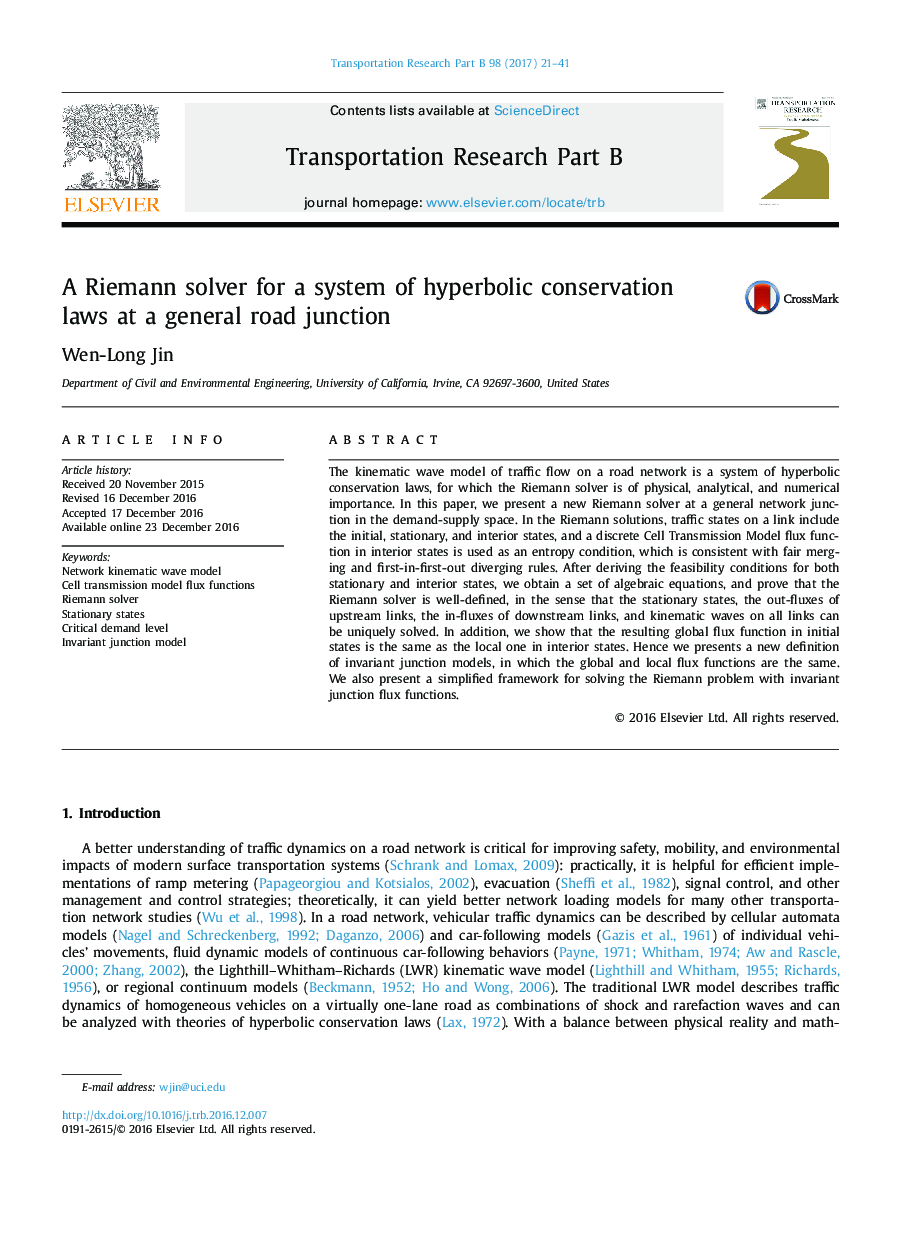| Article ID | Journal | Published Year | Pages | File Type |
|---|---|---|---|---|
| 5127114 | Transportation Research Part B: Methodological | 2017 | 21 Pages |
â¢In the Riemann solutions, a link has initial, stationary, and interior states.â¢A flux function in interiors states is used as an entropy condition.â¢Stationary and interior states are defined by a system of algebraic equations.â¢The Riemann solver is well-defined since the problem can uniquely solved.â¢The junction model is invariant since the global and local flux functions are the same.
The kinematic wave model of traffic flow on a road network is a system of hyperbolic conservation laws, for which the Riemann solver is of physical, analytical, and numerical importance. In this paper, we present a new Riemann solver at a general network junction in the demand-supply space. In the Riemann solutions, traffic states on a link include the initial, stationary, and interior states, and a discrete Cell Transmission Model flux function in interior states is used as an entropy condition, which is consistent with fair merging and first-in-first-out diverging rules. After deriving the feasibility conditions for both stationary and interior states, we obtain a set of algebraic equations, and prove that the Riemann solver is well-defined, in the sense that the stationary states, the out-fluxes of upstream links, the in-fluxes of downstream links, and kinematic waves on all links can be uniquely solved. In addition, we show that the resulting global flux function in initial states is the same as the local one in interior states. Hence we presents a new definition of invariant junction models, in which the global and local flux functions are the same. We also present a simplified framework for solving the Riemann problem with invariant junction flux functions.
